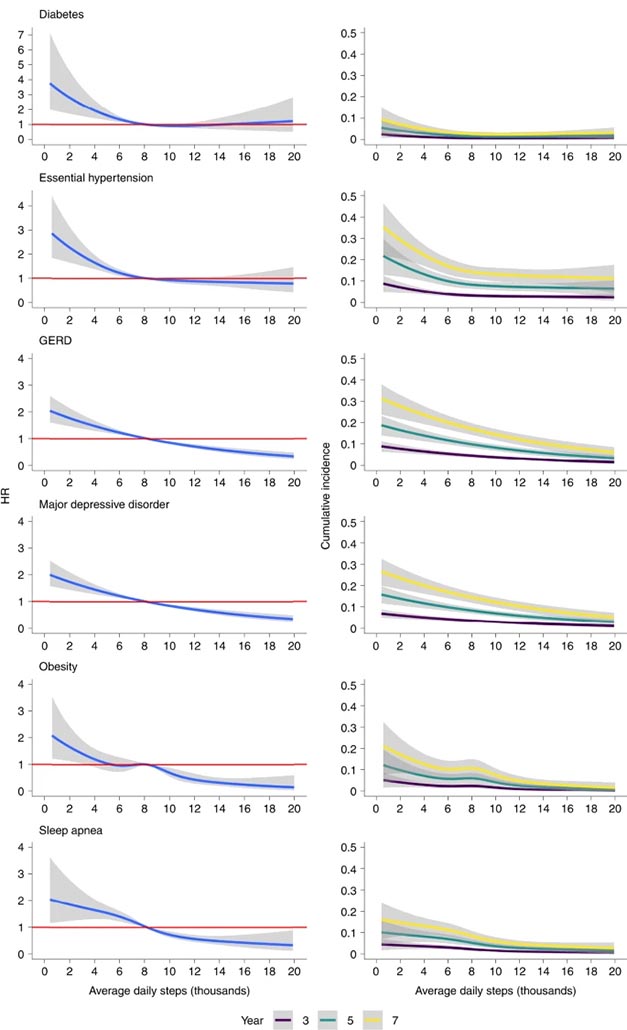12 Oct 2022
Hot on the heels of a report from Denmark that walking 9,800 steps per day in middle age slashed dementia risk in half, researchers led by Evan Brittain, Vanderbilt University Medical Center, Nashville, corroborated those findings for other chronic diseases. In the October 10 Nature Medicine, they reported that taking at least 8,200 daily steps protected against obesity, hypertension, Type 2 diabetes, sleep apnea, gastroesophageal reflux disease (GERD), and depression. Many of these are risk factors for dementia.
First author Hiral Master analyzed step counts from participants who recorded Fitbit data as part of the All of Us Research Program. This NIH initiative compiles a database of health records, genotypes, physical measurements, and wearable data from one million Americans. So far, the program includes 330,000 people. Master studied a subset of 6,042 volunteers, of whom 84 percent were Caucasian, and three-quarters were female. The median age was 57.
Step counts were monitored daily for at least six months, with participants averaging 7,700 steps per day over a median of four years. The researchers combed through medical records from that timeframe to correlate activity with incidence of chronic conditions. The scientists analyzed a total of 5.9 million person-days of data.
The sweet spot of protection against all six diseases hovered around 8,200 daily steps. However, two relationships between step count and risk emerged. First, the more steps a person took, the lower his or her risk of obesity, sleep apnea, GERD, and depression. For example, participants who walked 10,000 steps per day had a one-third lower risk of obesity than those who traversed 8,200 steps. Second, for hypertension and diabetes protection reached a threshold, with risk reduction tapering off at 8,000 steps (see image below). The scientists did not test for dementia incidence in this still-young cohort.
Walk It Off. For Type 2 diabetes and hypertension, maximum risk reduction was achieved by walking 8,000 steps a day. Hazard ratios steadily dropped with increasing step count for four other conditions, with further protection evident once people walked more than 8,000 steps per day. [Courtesy of Master et al., Nature Medicine, 2022.]
Walking intensity mattered too. Just as in the Danish study, moderate to vigorous walking, defined here as more than 100 steps per minute, lowered the risk of each disease in a step-wise manner (Sep 2022 news). In other words, more fast walking meant lower disease risk.
All told, this study confirms the disease-prevention power of walking and provides disease-specific step goals. “These results may offer an evidence base for refining activity recommendations based on an individual’s risk profile,” the authors wrote.—Chelsea Weidman Burke
No Available Comments
To make a comment you must login or register.
No Available Further Reading
To make an annotation you must Login or Register.
Copyright © 1996–2022 FBRI LLC. All Rights Reserved.